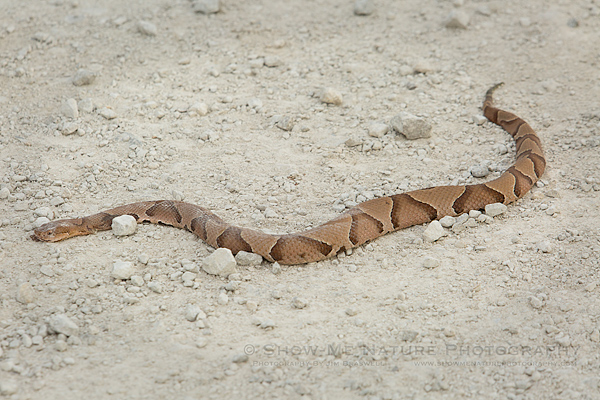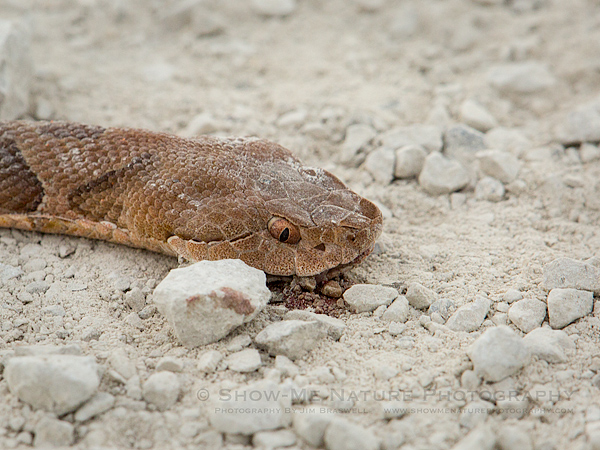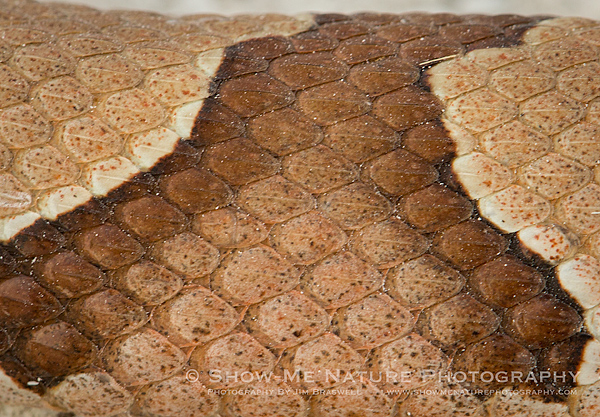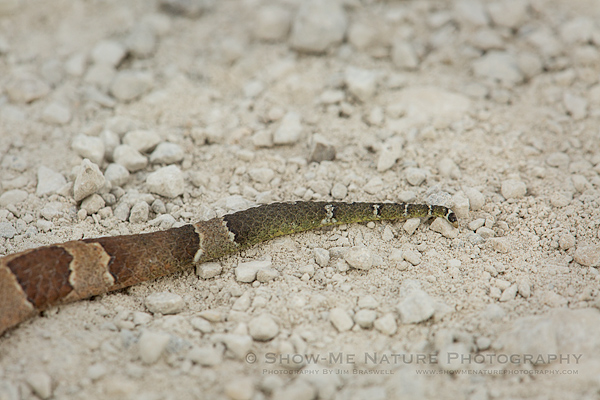Caution Ophidiophobics: This post contains snake images!!! If you don’t like snakes, please steer away from this post; tomorrow’s post will be something a bit more to your liking!
On my early morning therapeutic hike yesterday, I ran upon a Copperhead snake (Agkistrodon contortrix) that was lying on the gravel road. It looked alive, but just not active. My first thought was that it was capturing some of the early morning sunlight energy from the gravel road, so I approached very cautiously. Unfortunately, I had left my camera at the house. I quickly turned around and walked the ~0.5 mile back to the house, grabbed my camera, and returned.
When I returned to the location of the snake, it still hadn’t moved. I walked around it, making sure there were no movements or other indications it was alive. I then noticed that one of my neighbors must have run over the snake’s head, while on their way to work. Fortunately, the snake was still in excellent condition, with no visible signs of being hit … except for a small amount of blood under it’s head.
The copperhead, in my opinion, is one of the most beautiful of snakes (yes, I know, there will be many of my readers that absolutely HATE snakes, and I understand that. But being a biologist by education/training, I find them very interesting). The copperhead has wonderful color and can camouflage itself very well in it’s normal habitat … woodlands. But the copperhead tends to be one of the most mild-mannered of our local venomous snakes, rarely biting a human, unless it is picked up or stepped on (unlike our Timber Rattlesnake, that has a really horrible temper).
Here are some of the images I captured yesterday morning:
This next image is included to show a typical pattern found in the venomous snakes of the United States (not sure if venomous snakes around the world share this characteristic) … they have a vertical pupils in the eyes (non-venomous snakes have circular pupils). Also note that one of the two “pits” can be seen at the front of the head. All North American venomous snakes are “pit vipers” and contain two pits:
Honing in on the coloration and pattern of the copperhead’s scales:
And an extreme closeup of this hourglass, or bow tie pattern:
And this last image shows the greenish color that often is present at the copperhead’s tail:
This tail color, which fades as the snake ages, is used to attract prey. Whenever a lizard or frog ventures within a few feet of the snake, he may elevate the tip and shake it, attracting the prey close enough so he can grab it and inject his venom.
And yes, some of the images appear that I was extremely close to the copperhead. Actually, not knowing if the snake was dead or alive when I grabbed my camera, I attached my 180mm macro lens onto the camera body (in case it was dead), but added a 1.4x teleconvertor, just in case it was alive! :o)
Photographic Equipment Used:
- Canon 5D Mark 3 body
- Canon EF 180mm, f/3.5 macro lens + Canon 1.4x TC
- Handheld
- ISO 500
- Aperture f/11
- Shutter 1/125 sec. to 1/250 sec.














